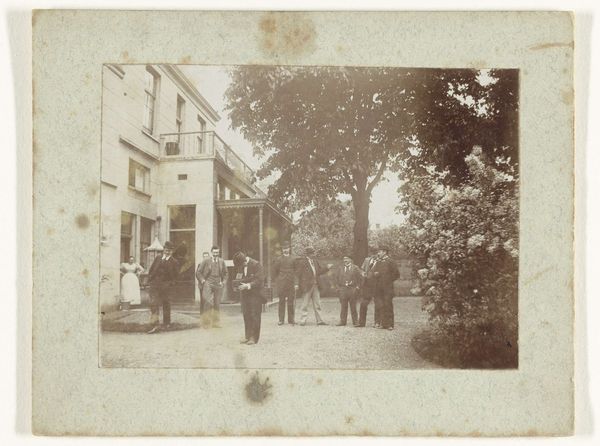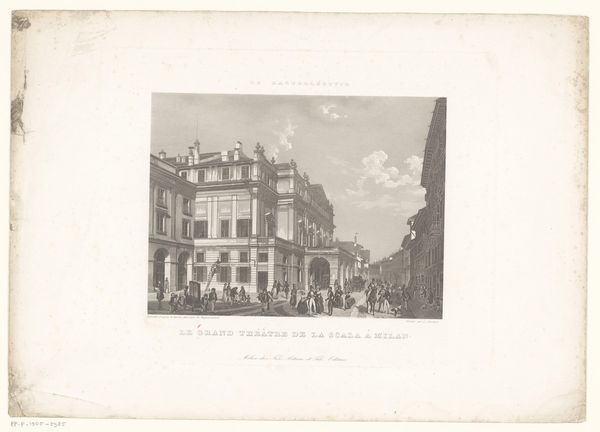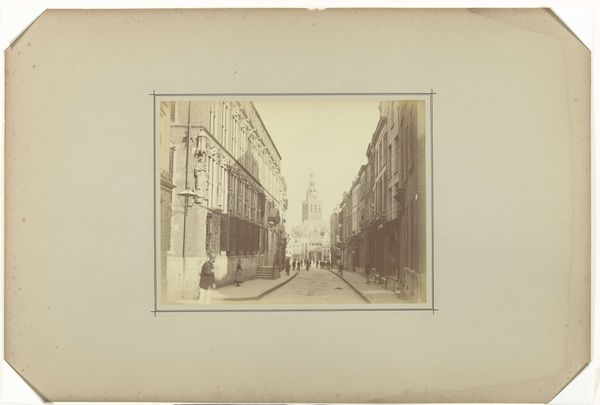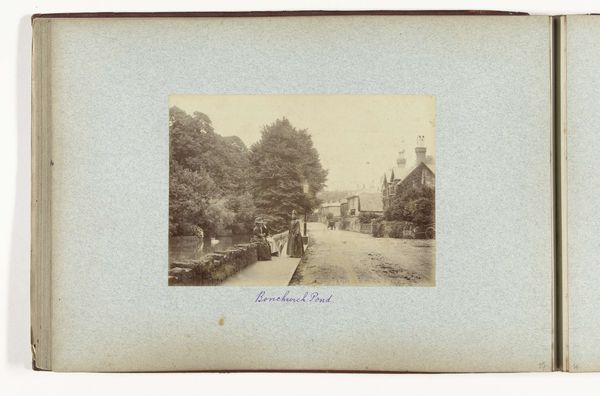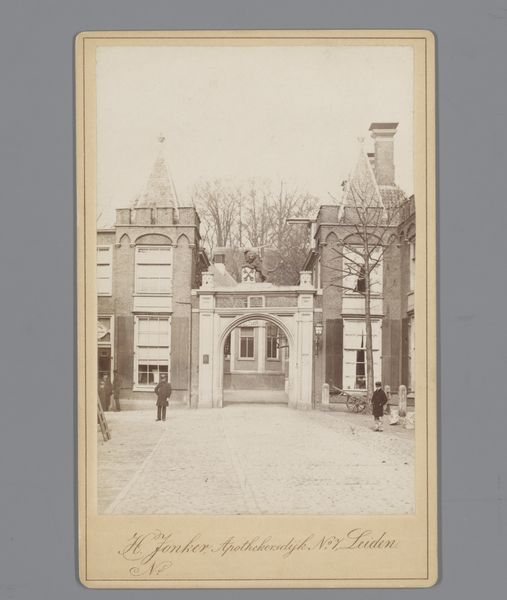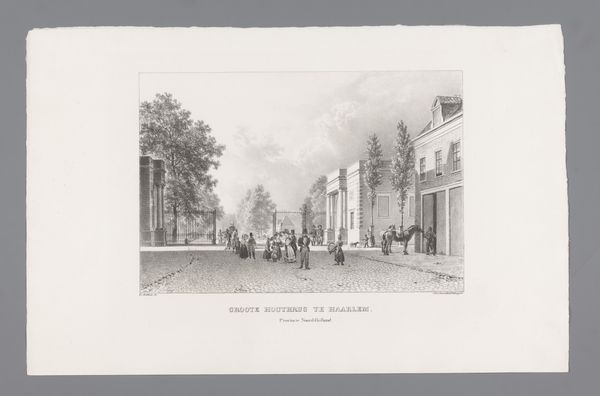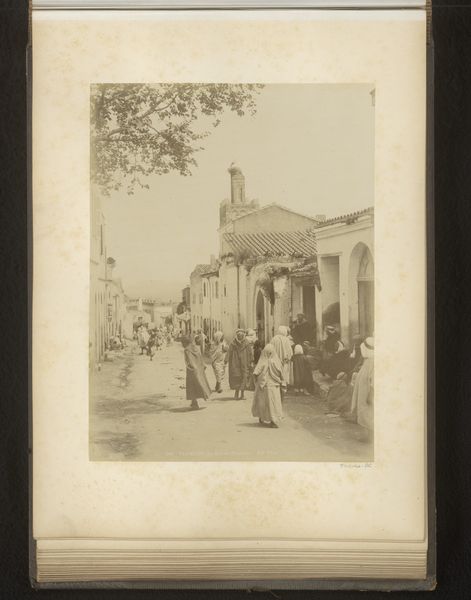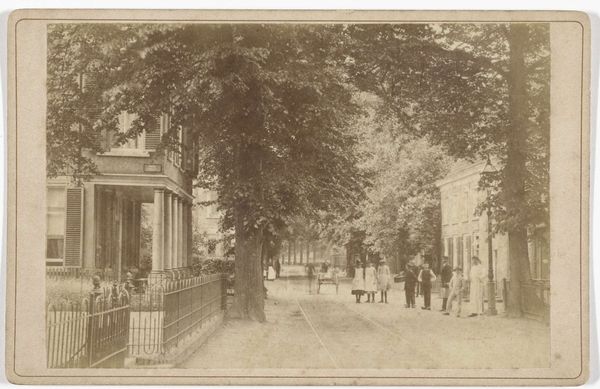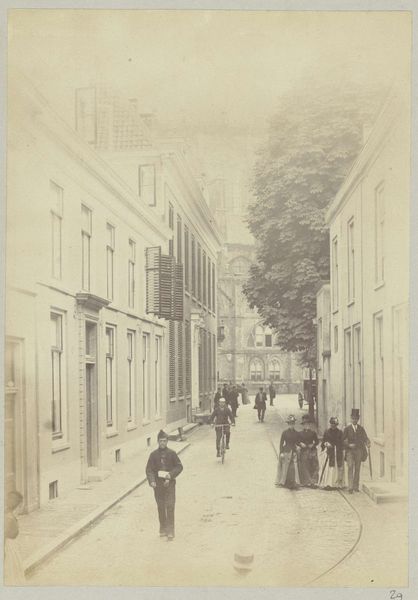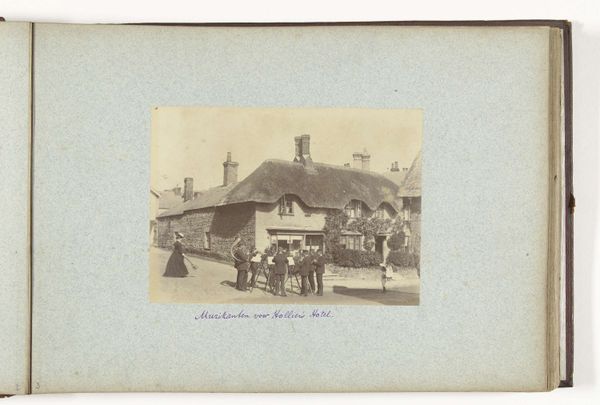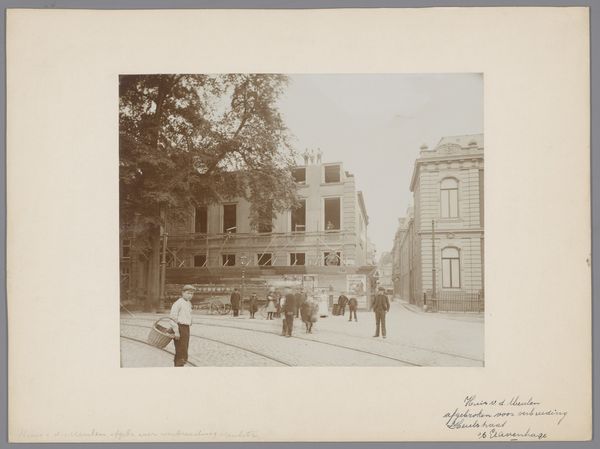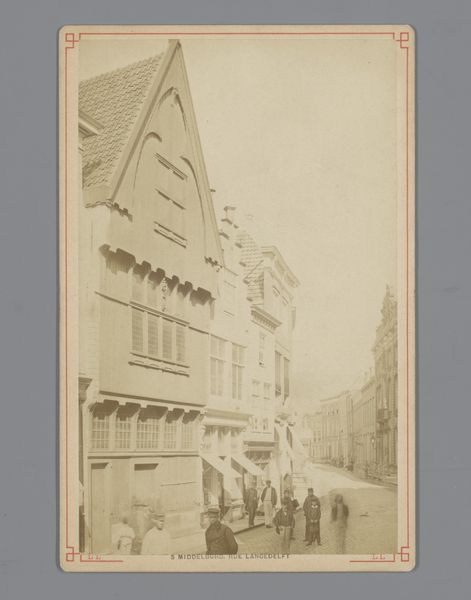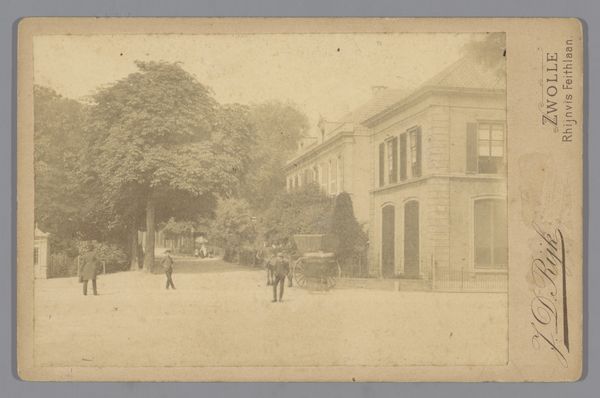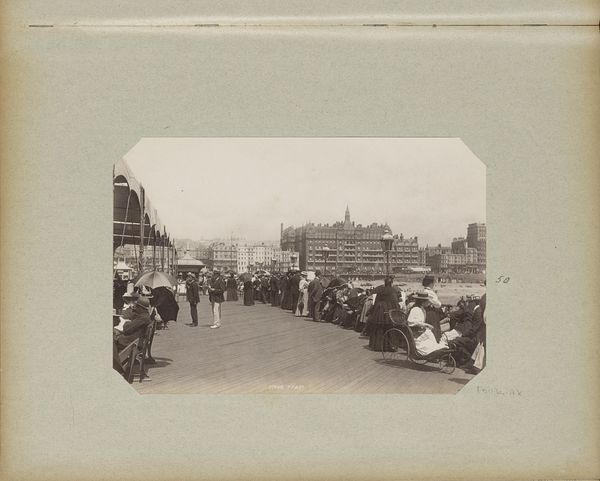
photography
#
pictorialism
#
street-photography
#
photography
#
coloured pencil
#
cityscape
Dimensions: height 121 mm, width 167 mm
Copyright: Rijks Museum: Open Domain
Curator: Today we’re looking at "Straatgezicht op High Street te Shanklin," which translates to "Street View of High Street in Shanklin." This photograph is attributed to Henry Pauw van Wieldrecht, possibly dating back to 1889, and it now resides in the Rijksmuseum collection. Editor: It’s quite charming, really. There's a stillness despite the depiction of a bustling street. I immediately notice how sharp the focus is on the shops and how that contrasts against the way the figures almost dissolve in movement, caught mid-stride. It's that tension, a mix of blur and clarity that grabs me. Curator: It certainly captures a moment in time. The image is indicative of the pictorialist movement, using photography to emulate painting and focusing on atmospheric effect rather than pure documentary precision. We see a composed scene of everyday life shaped by an artistic intention, the hand of the photographer is visible through light, focus, and arrangement. Editor: Speaking of hands, look at the awnings, the fabrics of the dresses. Those were physical products crafted and sold. It's a window into Victorian commerce, a world where textiles, signage, the goods themselves reflected not only material needs but a developing visual culture shaped by production and class. Even the photographic print itself – the paper, the developing process – it all tells a story of the material conditions that made such a view possible. Curator: Absolutely. The setting, Shanklin, on the Isle of Wight, was a popular resort. Images like these contributed to shaping perceptions and promoting tourism; we have this controlled narrative. They encouraged travel and consumption, reflecting the broader societal shift towards leisure and accessible experiences for the rising middle classes. Editor: So, we see not just a quaint street scene but a piece of visual rhetoric, an orchestrated slice of life designed to lure and perhaps idealize a particular form of modern life and consumption that, at its root, has less to do with idyllic relaxation and everything to do with industry and profit. Curator: I think what’s interesting, then, is to view this artwork through those varying layers. It offers a glimpse of societal values. What was idealized? What was considered aesthetically pleasing? And ultimately, how these constructions influenced culture and identity. Editor: I’ll simply say it’s about reminding us that pretty pictures always carry within them, and even rely on, material processes that can never be innocent. The labor, the craft, the materials. To ignore that, I feel, would miss the bigger picture.
Comments
No comments
Be the first to comment and join the conversation on the ultimate creative platform.
